2025 Kawasaki Mule SX Buyer’s Guide
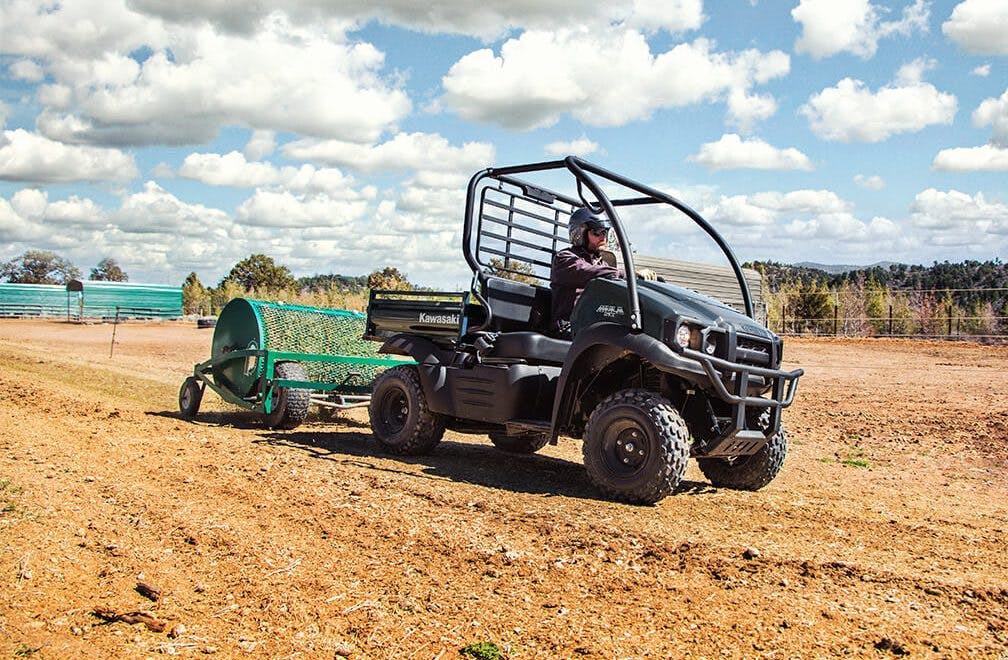
$8,199 MSRP / 21.4 LB-FT
• bargain worker
• fits in bed of a full-size pickup
• drum brakes, base model 2Wd only
Simple bones, dirt cheap, perfect name.
How work-focused is the Kawasaki Mule SX? Here’s a simple answer: Kawasaki’s marketing materials don’t list a horsepower figure for the Mule’s 401-cc single-cylinder engine. All you get is a torque number—a whopping 21.4 lb-ft.
If you know anything about engines, that omission will make sense: Horsepower is measure of rate, work completed over a period of time. Torque is a measure of force. And work machines live or die on force, on their ability to pull and tug and shove.
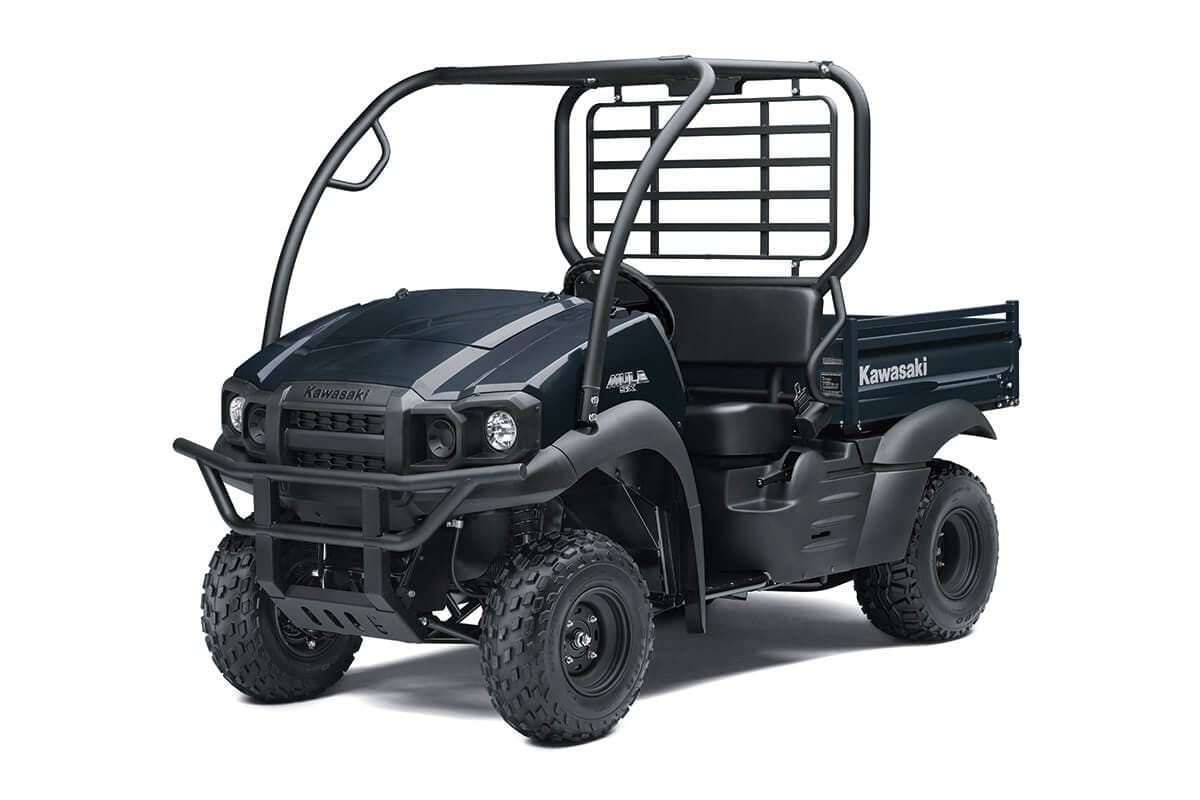
The Mule SX is not complex, it is not pretty, and it is not expensive or fast. What it is, is work, pure and simple, built well and priced so it can be afforded by anyone with a job.
If you need what the Mule SX offers, at this price, new with a warranty, there’s no better answer.
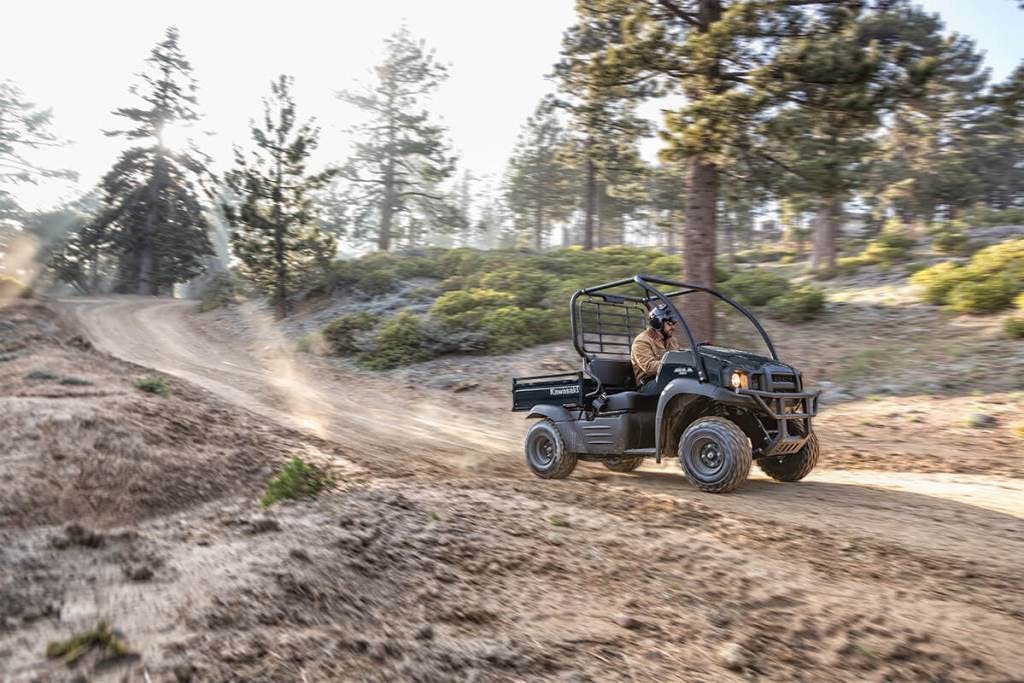
How much power does it make?
Again, Kawasaki won’t say. All we can give you is that 21.4-lb-ft. torque number. And a picture of an air-cooled, carbureted four-stroke single that is high in the running for Least Sexy Engine Photo in History. (Below.)
All hail the Nikki 6C1026 carburetor, for it delivers exactly what the base Mule needs, and no more. This tiny little overhead-valve engine sounds exactly like you’d think. Imagine a thrashy little piece of yard equipment, and then…
Nah, that’s it. That’s what the Mule SX sounds like: a lawnmower.
There is just enough grunt here for basic work tasks, and no more. Load a Mule SX to the gills or ask it to tow, it will get noticeably slower. And it starts off slow, even with a claimed weight of just 968 pounds. Two-wheel-drive is standard; if you want four-wheel-drive, you have to step up to the Mule SX 4×4 range, which starts at just under $10,000. If you want fuel-injection, you’ll have to pony up for the Mule SX 4×4 XC LE model, $10,999.
But! Even in carbureted two-wheel-drive, you’ll get your work done. That’s why the Mule SX exists.
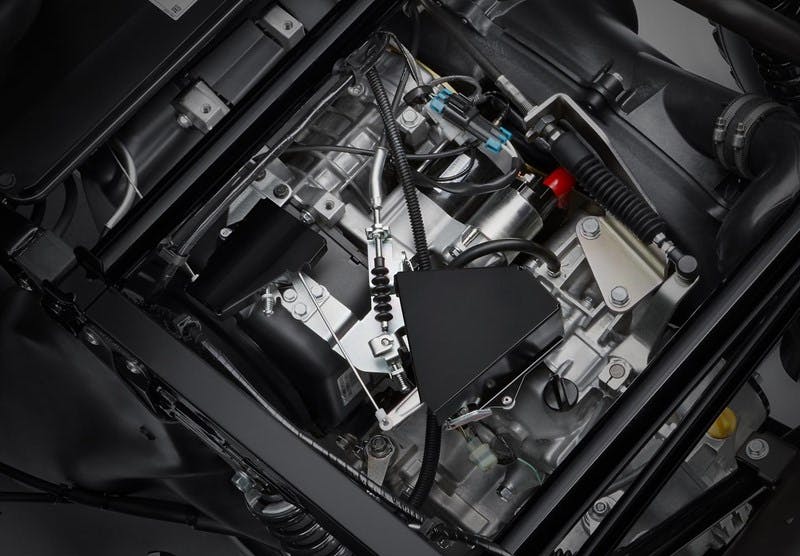
What makes it special?
Years ago, when the side-by-side business was little more than a few toughed-up golf carts aimed at farmers and gardeners, Kawasaki was one of the first mainstream manufacturers in the game. The company built its reputation in the space by focusing on reliability.
Much has changed since, but Kawasaki still thinks a side-by-side should be reliable above all. And with a machine at this price point—a base Mule SX costs just over $8000—that means simplicity. Manual steering. Drum brakes. Stone-basic suspension with a mere 3.1 inches of travel front and rear. Plus ride comfort that… isn’t.
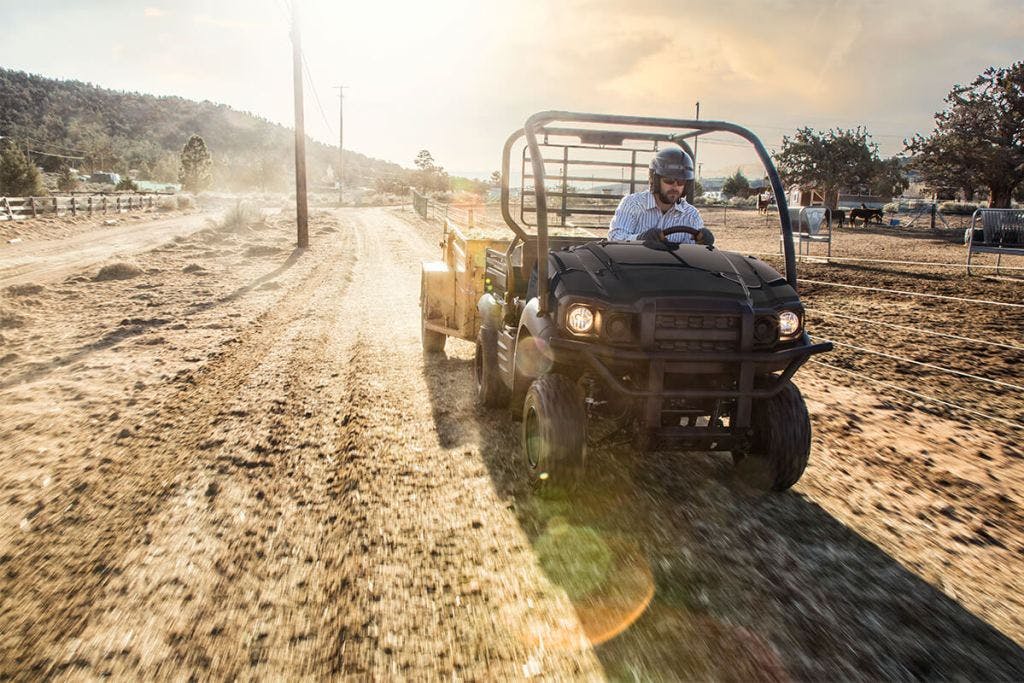
The upside? With the base SX, you get 1100 pounds of towing capacity and a steel cargo bed—rare in a SXS, especially at this price. That bed is rated for nearly 400 pounds.
On top of that, you get a total payload capacity of nearly 1000 pounds, a locking diff, and a three-year (!) warranty.
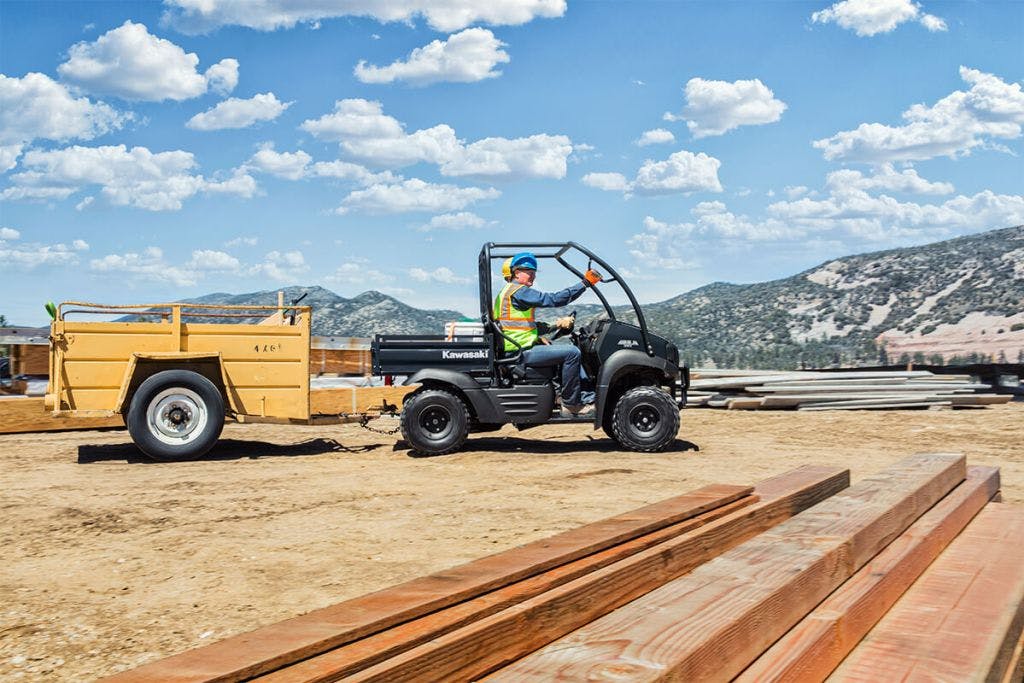
Why do I want it?
The Mule SX is the horseshoe crab of the side-by-side world: Everything around the Kawasaki has evolved, but the Mule just doesn’t care.
Again, simplicity is the pull here. If you just need something to check cows, if you’re a facilities manager for a public golf course… this is your huckleberry. It’ll cost about the same as the Chinese “throwaway” side-by-sides they sell at Lowe’s, but it won’t be built from melted-down pop cans and you’ll actually be able to get parts. And you will get every penny of your money’s worth.
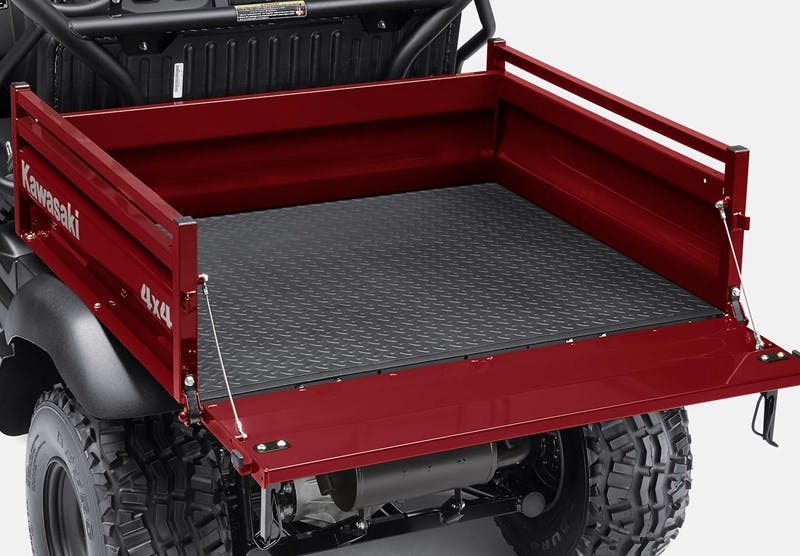
Why don’t I want it?
Same answer as above—the Mule SX is the horseshoe crab of the side-by-side world. Other reasons:
You want a big-name work tool, like a Kubota RTV or a John Deere Gator. (Be prepared to up your budget by a third, at least.)
You want more capability—four-wheel-drive, fuel-injection, more power, more towing ability. (Cool; Kawasaki’s Mule lineup has other options to help.)
You hate the idea of spending all day on the job in a machine with a nonadjustable steering wheel and a flat bench seat that sits you bolt-upright.
Basically, you buy a Mule SX if price is your greatest concern. If your wallet’s a little looser, the market holds other answers. The catch is, those answers aren’t always better—sometimes, they’re simply more expensive.
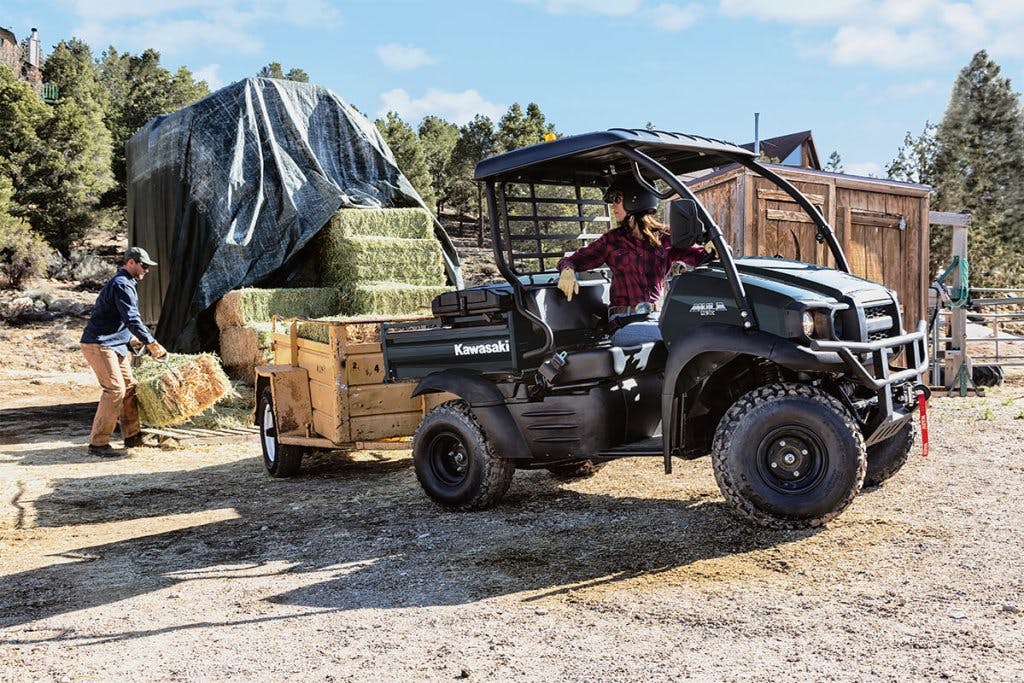
Which trim do I want?
Answering that question means answering another question first: Do you need four-wheel-drive, or do you just want it?
The Mule is like a lot of side-by-sides—on the right tires, two-wheel-drive can take you an awful long way. In that light, if you’re shopping entirely on bang for buck, the base Mule SX is best balance of practicality and cost.
If you can spend a little more, we’d aim for the top of the range—the Mule SX 4×4 XC LE. No, it’s not the checkbook sweetheart of the line. But for an MSRP of just $10,999, you get a hard poly roof (indispensable for long days in rain or sun) and, yes, four driven wheels.
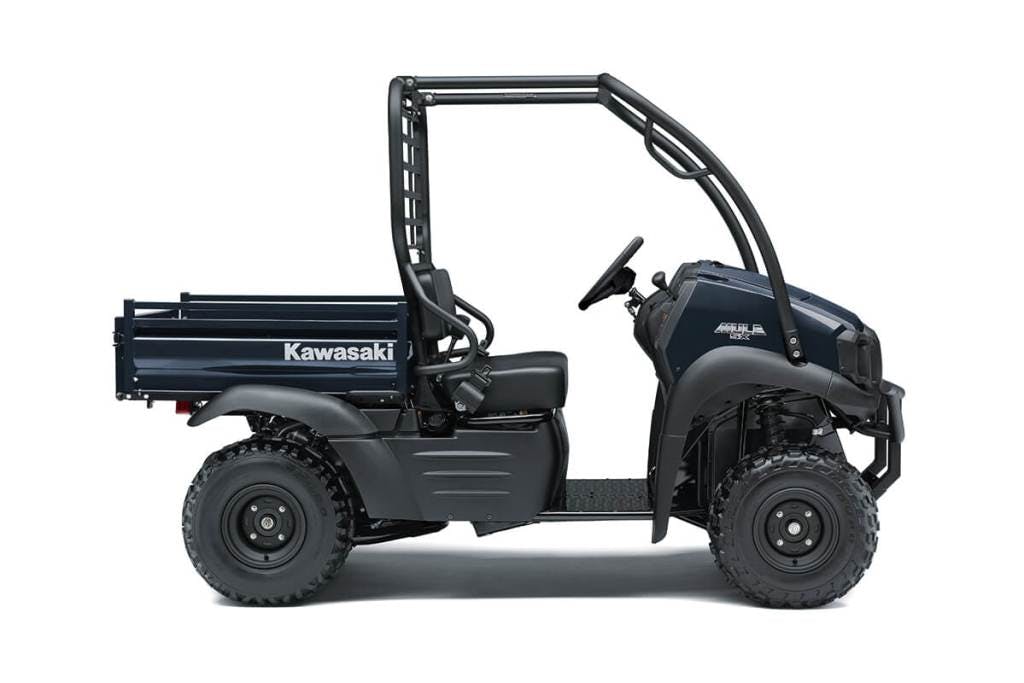
If I like this… what else should I look at?
Check out the Honda Pioneer 1000 and 1000-5, the Yamaha Viking, and the Polaris Ranger SP 570. (Just don’t expect them to come with a three-year warranty or be anywhere near this cheap.)
2024 Kawasaki Mule SX Specs
Length: 106.7 in.
Width: 52.6 in.
Height: 70.1 in.
Wheelbase: 70.1 in.
Claimed Curb Weight: 968 lb.
Engine: Unicam OHV, air-cooled single-cylinder
Displacement: 401 cc
Transmission: CVT w/ low, high, reverse
Claimed Power: N/A
Claimed Torque: 20.6 lb-ft.
Fuel System: Nikki 6C1026 carburetor
Steering: Manual
Drivetrain: 2WD shaft-drive with locking rear differential
Front Suspension: MacPherson strut; 3.1 in. travel
Rear Suspension: Swing-arm; 3.1 in. travel
Front Brakes: Drum
Rear Brakes: Drum
Wheels F/R: Steel; 10 in.
Tires F/R: 22×9-10 / 22×11-10
Bed Capacity: 399 lb.
Towing Capacity: 1100 lb.
Seating Capacity: 2
Ground Clearance: 6.1 in.
Fuel Capacity: 4.2 gal.
